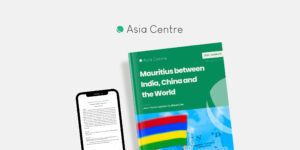Jae-Seung Lee (Korea University)
Election in the Middle of Pandemic
In South Korea, the COVID 19 is calming down. In fact, except for a few regions, many cities were not in a panic situation even though they were extremely cautious. Testing, quarantine and treatment were pre-emptive and effective. The previous experience of MERs (Middle East Respiratory Syndrome) in 2015 left a valuable know-how to deal with epidemic diseases.[1] As many MERs patients were infected in the hospital, major hospitals were required to equip sufficient number of negative pressure room. An overall Korean medical infrastructure was solid and easily accessible to (quasi) all patients and the COVID tests were made extensively from the beginning. In addition, mask-wearing were not unfamiliar to Korean people due to frequent yellow- and micro-dust pollution. An early-warning system using cellular phone has been widely used already. The Korean people knew quite well how to behave in the pandemic situation.
Schools were closed and people were asked to stay at home but, in fact, the quarantine was less strict. The delivery system was well-functioning and there was no urgent need to stand in a queue for supplies. From toilet paper to fresh food, delivery service was available without interruption with a few clicks on the cellular phone application. There has been certain degree of freedom of movement, unless officially designated as a high-risk quarantine in some cases and cities. As the number of new cases dropped at a manageable level, the government decided to proceed the general election as scheduled.

Self-Distancing vs Political Solidarity
Political participation of South Korean people has been high. The public protest and “candlelight demonstration” in 2016 pulled the president down from her office peacefully. The South Korean society has become, in fact, highly politicized and polarized between the conservatives and the progressives in recent years. This general election symbolized the main battle between the two camps. Amid the pandemic situation, the voter turn-out was the highest as ever. As the Korean management of COVID19 began to receive foreign applause, the government had no reason to delay the election. The perception of national pride was going up and the public concern for the explosive contagion was diminishing.
The “Pre-Vote” system, which was introduced to complement an absentee ballot, gave an option to the voter to choose one of multiple voting dates. They could find the nearby polling station while avoiding the crowd. The pre-vote rate was historically high this time. At a polling place, everyone was required to wear a mask and the hand cleaner and plastic gloves were provided for free. No one complained about queuing with one-meter-distance. The Korean people were already getting accustomed to a new lifestyle. As many elementary and middle schools have been used for polling place, some even found a childhood nostalgia of standing in a line at the weekly playground gathering. Self-distancing went together with their preferred political solidarity.

Winner, Savior and Loser
The biggest winner of this “pandemic election” was the progressive government party. The Coronavirus “masked” a number of scandals and the deteriorating economic condition. The government announcement of cash subsidy could soften the minds of the public. A relatively successful management of the spread of COVID19 vis-à-vis the US and European countries was a strong magnet to pull the public support. The “rallying effect” to be united for the crisis worked dramatically.
On the contrary, the opposition party’s voice to judge the government failures was unheard due to the constituencies staying at home. The COVID issue was strong enough to erase the memories before the pandemic, at least for now. Without a doubt, however, the biggest factor for the miserable defeat of the conservative opposition party was an incompetent leadership, fragmented campaign strategies and unrepentant remarks. It was the opposition party itself who got hit the most heavily by the Corona virus.
Parasite, Virus and the Korean Model
The Korean society has shown an orderly response to the pandemic crisis. Accessible medical system, well equipped infrastructure and early warning system enabled the election in the middle of pandemic. Know-hows and experiences learned from the earlier MERs crisis became an effective virus-proof mechanism. Most of all, the biggest contributors were medical staffs and delivery personnel who provided the safety net to maintain a stable lifestyle. The goddess of fate chose only one political party that would receive those credits as a representative.
The movie “Parasite” won four Oscar prizes in February, and was expected to be more popular in many more places around the world. It is unfortunate that the COVID19 closed most of movie theaters. However, the Korean model of COVID19 management is creating another spotlight on the Korean society. The crisis is not over yet, but with a cautious optimism, it would be interesting to see the validity of successful quarantine mesures with a certain degree of freedom.
[1] A total of 186 infected and 38 dead.




